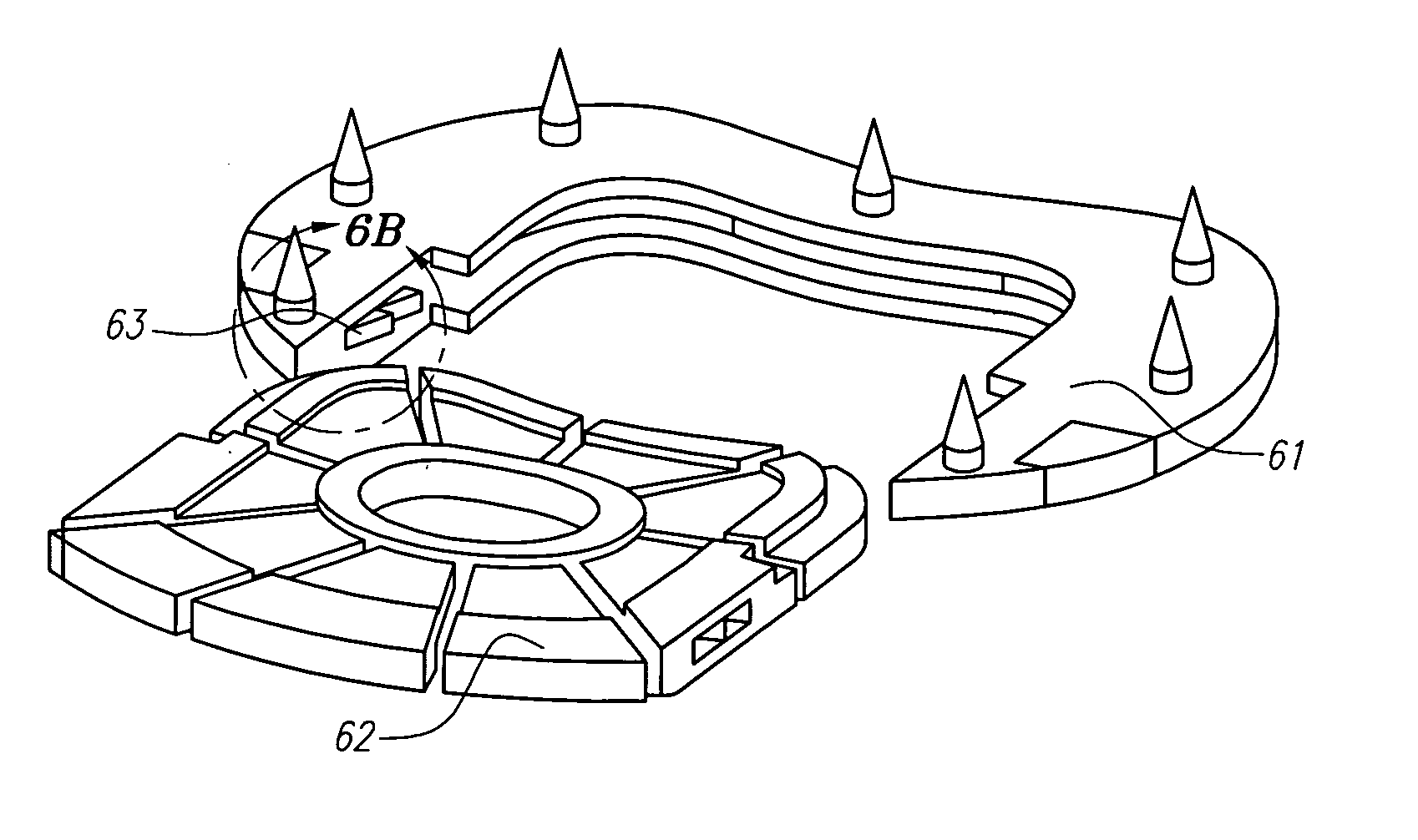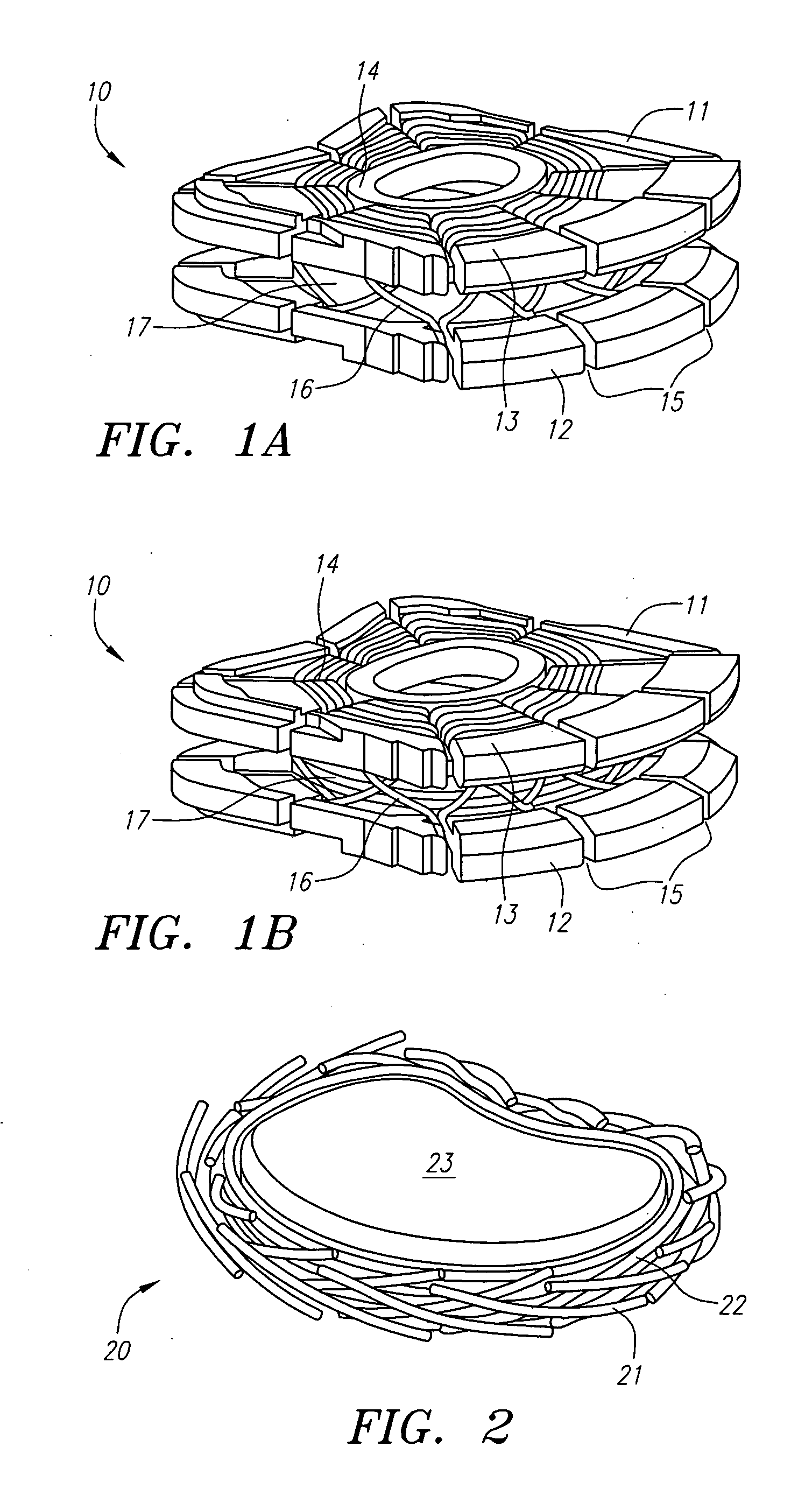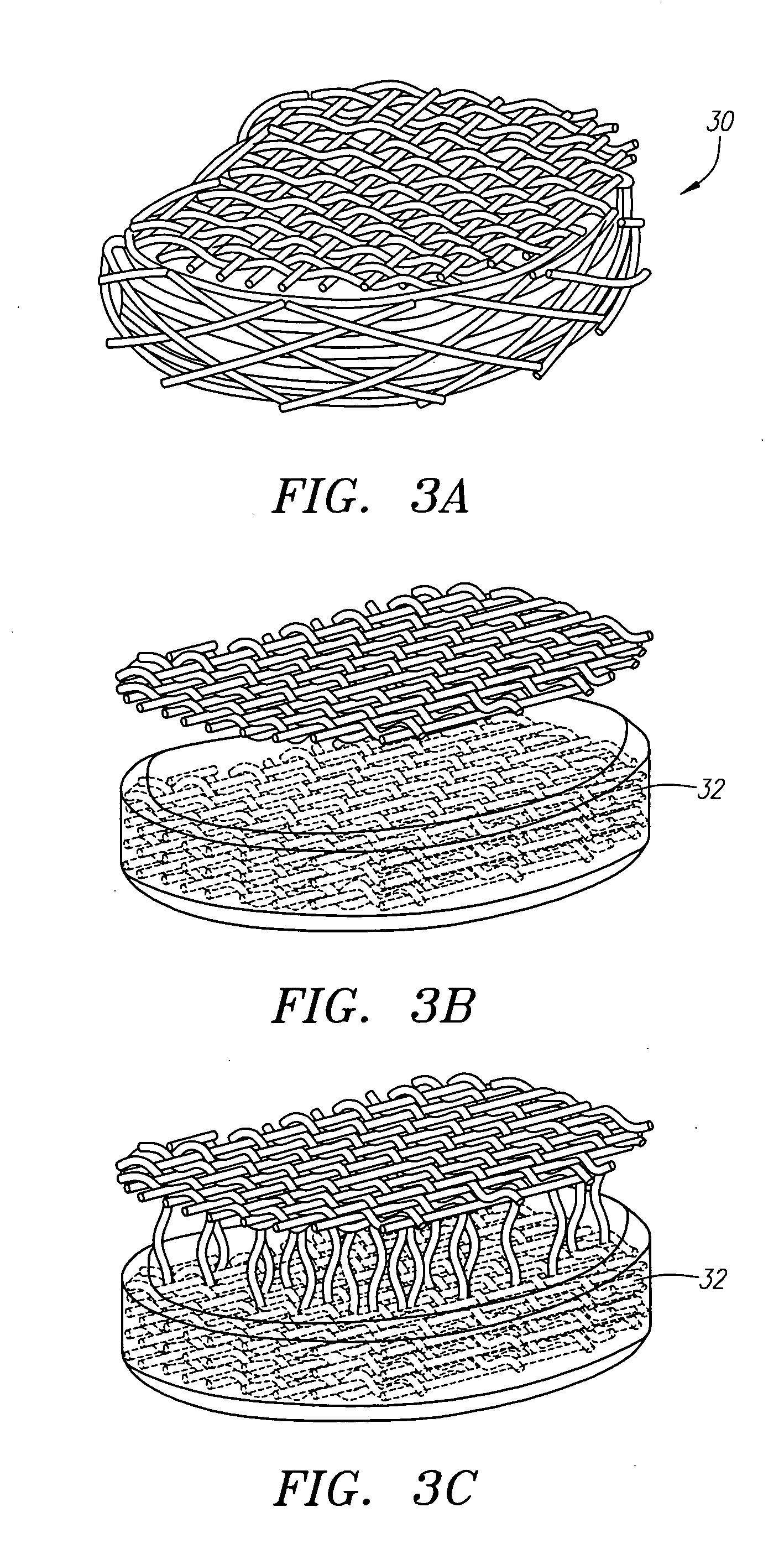Prosthetic intervertebral disc and methods for using same
a technology of applied in the field of prosthetic intervertebral discs and methods for using same, can solve the problems of degenerative changes at adjacent mobile segments, pain or paralysis in the area of their distribution, and displaced or damaged spinal discs, etc., and achieves high modulus of elasticity and high tenacity.
- Summary
- Abstract
- Description
- Claims
- Application Information
AI Technical Summary
Benefits of technology
Problems solved by technology
Method used
Image
Examples
first embodiment
a. First Embodiment
[0291] A preferred implantation procedure utilizes the spacer 810, chisel 830, and holder 850 shown in FIGS. 36-38. As discussed above, the procedure described herein is in relation to implantation of a one-piece prosthetic disc. This description is intended to illustrate the apparatus and methods described herein, however, and is not intended to be limiting.
[0292] A first step of the procedure is to expose the two adjacent vertebrae to be treated by conventional surgical procedures and to remove the natural disc. Once the natural disc has been removed, the spacer 810 is advanced and its head portion 816 is placed between the two adjacent vertebrae in order to separate them. After the vertebrae are adequately separated, the spacer 810 is withdrawn.
[0293] The two-sided chisel 830 is then advanced and its head portion 836 is placed between the vertebral bodies. Because of the size of the head portion 836 relative to the axial space between the vertebrae, the wedge...
second embodiment
b. Second Embodiment
[0295] An alternative implantation procedure is illustrated in FIGS. 43 through 49. The preferred procedure utilizes the implantation tools described above in relation to FIGS. 39-42. As discussed above, the procedure described herein is in relation to implantation of a two-piece prosthetic disc. This description is intended to illustrate the apparatus and methods described herein, however, and is not intended to be limiting.
[0296] Turning first to FIGS. 43A-B, after the two adjacent vertebrae to be treated are exposed by conventional surgical procedures and the natural disc is removed, the guide member 500, lower pusher 520, and upper pusher rods 541a, 541b are advanced in the direction of arrow “A” toward the void space between the two adjacent vertebrae 601, 602 until the outer lower endplate 220b and first chisel 540 are located between the two adjacent vertebrae 601, 602 (see FIG. 43B).
[0297] At this point in the procedure, the distance “d” between the ver...
PUM
 Login to View More
Login to View More Abstract
Description
Claims
Application Information
 Login to View More
Login to View More - R&D
- Intellectual Property
- Life Sciences
- Materials
- Tech Scout
- Unparalleled Data Quality
- Higher Quality Content
- 60% Fewer Hallucinations
Browse by: Latest US Patents, China's latest patents, Technical Efficacy Thesaurus, Application Domain, Technology Topic, Popular Technical Reports.
© 2025 PatSnap. All rights reserved.Legal|Privacy policy|Modern Slavery Act Transparency Statement|Sitemap|About US| Contact US: help@patsnap.com



